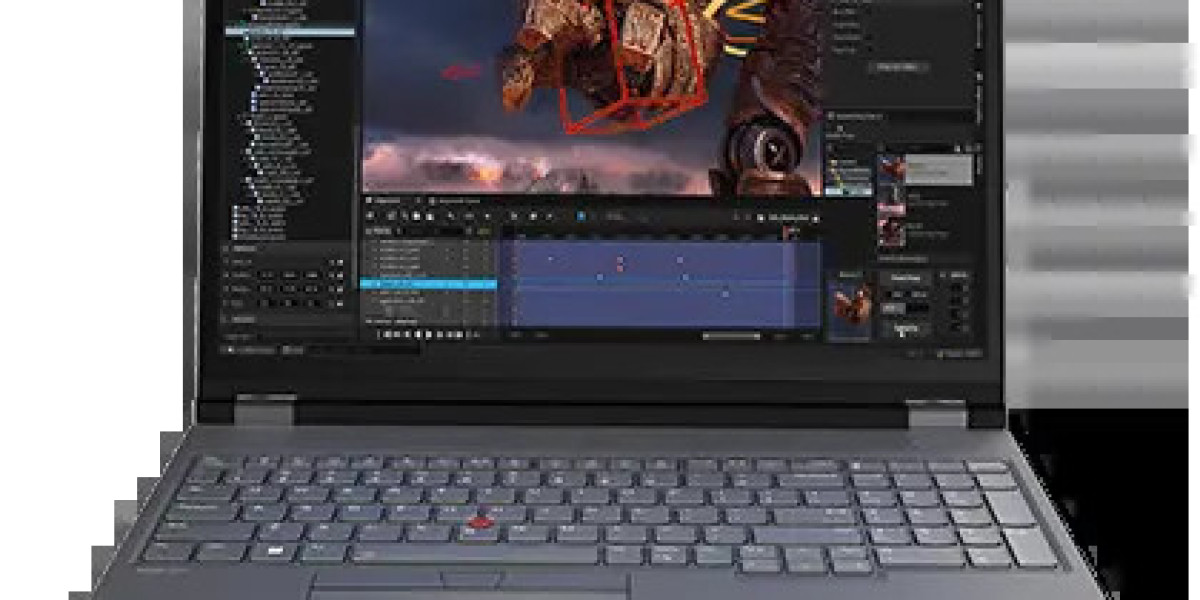In the rapidly evolving world of technology, gaming laptops have carved out a unique and essential niche for gamers who demand both power and portability. Unlike traditional laptops designed primarily for productivity or casual use, gaming laptops are built to deliver high performance for the most demanding video games while still providing the convenience of mobility. Whether you’re a hardcore gamer, a streamer, or someone who enjoys the latest AAA titles on the go, understanding what makes a gaming laptop stand out is crucial before investing in one.
What is a Gaming Laptop?
A gaming laptop is a portable computer specifically engineered to handle the intense graphical and processing demands of modern video games. These laptops pack powerful CPUs, advanced GPUs (graphics processing units), fast RAM, and high-refresh-rate displays into a compact chassis. They often come with enhanced cooling solutions to keep the hardware from overheating during long gaming sessions.
While many laptops today are capable of running games, a true gaming laptop is optimized for immersive gaming experiences, featuring hardware that rivals or even surpasses desktop gaming rigs in some cases.
Key Components of a Gaming Laptop
1. Graphics Processing Unit (GPU)
The GPU is arguably the most important component in a gaming laptop. It handles rendering the complex graphics and visual effects that modern games demand. High-end gaming laptops typically feature dedicated GPUs from NVIDIA’s GeForce RTX series or AMD’s Radeon RX line. These GPUs support real-time ray tracing, high frame rates, and crisp, detailed visuals.
2. Central Processing Unit (CPU)
The CPU manages the overall computing tasks and game logic, including physics, AI, and multitasking. Modern gaming laptops use powerful multi-core processors from Intel’s Core i5, i7, and i9 series or AMD’s Ryzen 5, 7, and 9 processors. The latest CPUs offer high clock speeds and efficient architectures to ensure smooth gameplay.
3. Memory (RAM)
RAM allows the system to quickly access and process game data. Most gaming laptops come with at least 16GB of DDR4 RAM, which is sufficient for gaming and multitasking. Some enthusiasts opt for 32GB or more to future-proof their systems or handle resource-heavy tasks like streaming and video editing alongside gaming.
4. Storage
Speedy storage reduces game load times and improves system responsiveness. Solid-state drives (SSDs) are standard in gaming laptops, with NVMe SSDs offering the fastest read/write speeds. Storage capacities vary, but a 512GB or 1TB SSD is common, often paired with a secondary HDD for extra storage.
5. Display
Gaming laptops often feature displays with high refresh rates (120Hz, 144Hz, or even 240Hz and beyond) to provide smoother and more fluid gameplay. Screen sizes typically range from 15 to 17 inches, with resolutions of 1080p (Full HD) being standard, and some models offering 4K options for enhanced visuals.
6. Cooling Systems
Gaming hardware generates significant heat, so robust cooling solutions are essential. Many gaming laptops use multiple fans, heat pipes, and vapor chamber cooling to maintain optimal temperatures. Advanced models also include software to monitor and adjust fan speeds and power settings.
7. Keyboard and Build Quality
Gaming laptops usually feature backlit keyboards, often customizable with RGB lighting to create an immersive ambiance. Key travel, tactile feedback, and anti-ghosting capabilities are important for gaming precision. The build quality is typically sturdy, using metal or reinforced plastic chassis to withstand heavy use.
Advantages of Gaming Laptops
Portability
Unlike desktop gaming rigs, gaming laptops let you play your favorite titles anywhere—whether at home, at a friend’s place, or on a trip. This flexibility is a significant advantage for gamers who travel or attend LAN parties.
All-in-One Design
Gaming laptops combine a display, keyboard, trackpad, and hardware into a single unit, simplifying setup and reducing clutter. This convenience appeals to users who want a streamlined gaming experience without the hassle of multiple peripherals.
Versatility
Besides gaming, these laptops are powerful enough for demanding productivity tasks such as video editing, 3D rendering, and software development, making them a versatile choice for creators and professionals.
Disadvantages and Considerations
Price
Gaming laptops are typically more expensive than equivalent desktop PCs due to the miniaturization of components and cooling requirements. High-end models with the latest hardware can cost well over $2,000.
Heat and Noise
Despite advanced cooling, gaming laptops can get hot and noisy during intense sessions, which might be uncomfortable for some users.
Upgradeability
Unlike desktops, gaming laptops have limited upgrade options. While RAM and storage can sometimes be upgraded, the CPU and GPU are usually fixed, meaning the laptop’s performance may become outdated faster.
Battery Life
Gaming laptops consume more power, resulting in shorter battery life compared to standard laptops. For serious gaming, plugging in the power adapter is usually necessary.
How to Choose the Right Gaming Laptop
When selecting a gaming laptop, consider your gaming habits, budget, and preferences:
Budget: Determine how much you’re willing to spend. Entry-level gaming laptops can start around $800-$1,000, while premium models exceed $2,500.
Game Types: For esports titles (like CS:GO or League of Legends), a mid-range GPU and CPU with a high-refresh-rate display may suffice. For AAA games with demanding graphics, invest in higher-end hardware.
Portability Needs: If you travel often, look for thinner, lighter models with good battery life.
Display Quality: Consider screen size, resolution, refresh rate, and color accuracy.
Brand and Support: Choose reputable brands with solid warranties and customer support.
Popular Gaming Laptop Brands
Some of the most well-known brands for gaming laptops include:
Alienware (Dell): Known for premium designs and high performance.
ASUS ROG (Republic of Gamers): Offers a wide range of models catering to different budgets.
MSI: Focuses on powerful hardware and robust cooling.
Razer Blade: Combines sleek aesthetics with strong gaming capabilities.
Acer Predator: Provides good value and solid specs.
Lenovo Legion: Balances performance and affordability.
The Future of Gaming Laptops
As technology advances, gaming laptops continue to evolve with innovations like:
Improved GPU Architectures: Delivering ray tracing and AI-enhanced graphics without sacrificing power efficiency.
Mini-LED and OLED Displays: For better color accuracy and contrast.
Enhanced Cooling Technologies: Such as liquid metal thermal compounds and vapor chambers.
Integration of AI and Cloud Gaming: Allowing hybrid solutions that reduce hardware strain.
Conclusion
Gaming laptops represent the perfect intersection of power, portability, and versatility for gamers who refuse to be tethered to a desk. While they come with trade-offs in price, heat, and upgradeability, their ability to deliver high-quality gaming experiences anywhere makes them a compelling choice. By understanding the key components, features, and considerations, you can find a gaming laptop that perfectly fits your gaming style and needs, setting you up for countless hours of immersive play.








